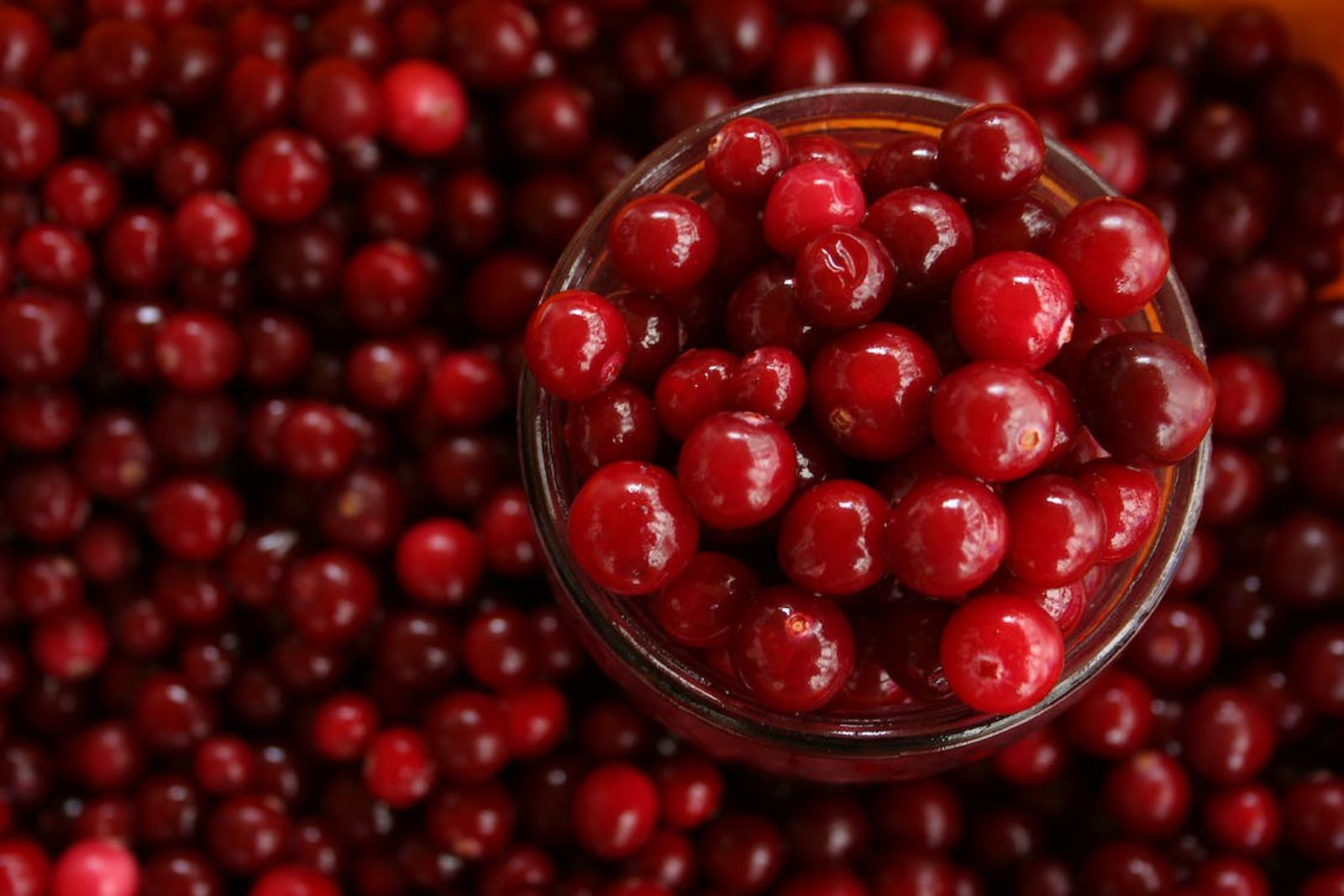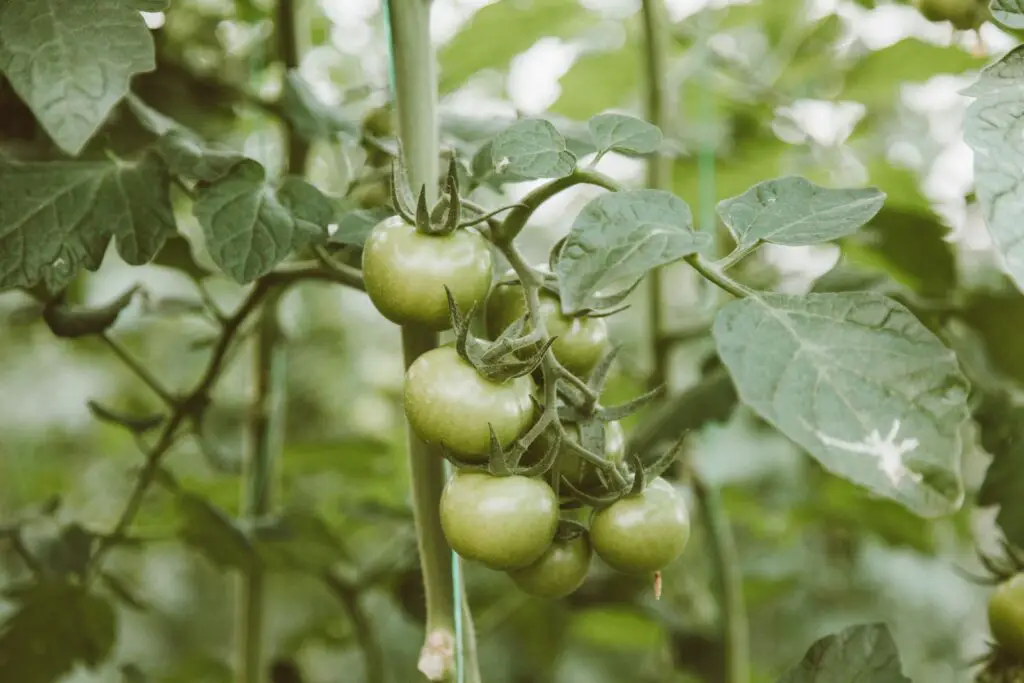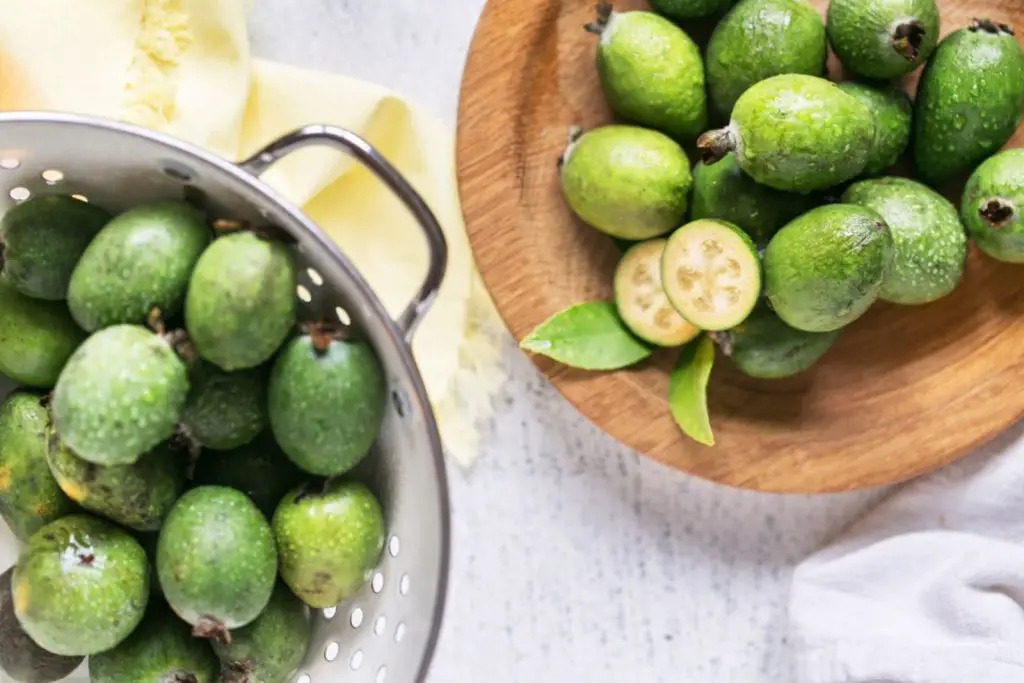
Cranberries are small, round berries that grow on evergreen shrubs in wet and acidic environments. They are known for their vibrant red color and tart taste. Cranberries are rich in antioxidants and vitamin C, making them a popular choice in various culinary dishes, beverages, and as a traditional accompaniment to holiday meals. Freezing cranberries is a wonderful way to preserve their freshness and enjoy these tart and vibrant berries throughout the year. In this article, we will explore the proper techniques and steps to freeze cranberries effectively, allowing you to enjoy their goodness whenever you desire.
Here’s a guide on how to freeze cranberries effectively:
Step 1: Prepare the cranberries
Before freezing cranberries, it’s crucial to begin with fresh and ripe berries. By taking a few minutes to sort and clean the cranberries, you can ensure that only the best quality ones are preserved. Here’s a closer look at why each step is important:
- Sorting the cranberries allows you to remove any damaged, bruised, or overripe berries. These cranberries may not freeze well and could potentially affect the overall quality of the batch. By discarding them, you can focus on preserving the best cranberries for future use.
- Rinsing the cranberries under cool running water is necessary to remove any dirt, debris, or residue that may be present on the berries. This step helps ensure that the cranberries are clean and free from any contaminants that could affect their taste or texture.
It’s worth noting that cranberries have a natural protective coating called “bloom” on their surface. This waxy layer helps keep the berries fresh. However, during the sorting and rinsing process, this bloom may be partially removed. While it doesn’t significantly impact freezing, it’s important to handle the cranberries gently to minimize any loss of the protective bloom.
Can I freeze cranberries without washing them?
It is generally recommended to wash cranberries before freezing them to remove any dirt, debris, or potential contaminants. Washing helps ensure the cranberries are clean and ready for consumption after thawing. However, if the cranberries have already been commercially washed and packaged, freezing them without additional washing may be acceptable, but it is advisable to check the packaging instructions or consult the cranberry producer for specific recommendations.
Is it necessary to remove stems before freezing cranberries?
It is generally recommended to remove the stems from cranberries before freezing them. The stems can contribute to a bitter taste and affect the texture of the cranberries during freezing. Removing the stems also helps ensure even freezing and allows for easier usage of the cranberries in recipes after thawing.
Should I blanch cranberries before freezing them?
Blanching cranberries before freezing is not necessary. Unlike some other fruits and vegetables, cranberries do not require blanching as they have a naturally high acid content that helps preserve their quality during freezing. Simply wash, dry, and package the cranberries properly before freezing to maintain their texture and flavor.
Step 2: Dry the cranberries
After washing the cranberries, it’s essential to dry them thoroughly before freezing. This step may seem simple, but it plays a crucial role in maintaining the quality of the frozen cranberries. Here’s why drying the cranberries is important:
- When cranberries are washed, they absorb moisture. If excess moisture remains on the berries when they are frozen, it can lead to the formation of ice crystals. These ice crystals can damage the cell structure of the cranberries, resulting in a loss of texture and potential flavor alteration.
- By gently patting the cranberries dry using a clean kitchen towel or paper towels, you remove the excess moisture on the surface of the berries. This helps minimize the formation of ice crystals during freezing, as the cranberries will have less water content.
- It’s worth noting that cranberries have a naturally high water content, and freezing them with excess moisture can result in a mushy texture when thawed. By drying the cranberries thoroughly, you create a better environment for freezing, preserving their firmness and texture.
- Additionally, drying the cranberries helps prevent clumping during freezing. If the berries are still wet when placed in the freezer, they can stick together and form a solid mass. By ensuring they are dry, you encourage individual freezing, allowing you to easily take out the desired quantity without having to thaw the entire batch.
Step 3: Choose the freezing method
When it comes to freezing cranberries, you have two primary methods to choose from: flash freezing or syrup packing. Each method offers its own advantages, depending on how you intend to use the cranberries.
- Flash Freezing:
Flash freezing is an excellent option if you prefer to have individual cranberries readily available for use in various recipes.
- Syrup Packing:
Syrup packing is a preferred method if you intend to use the cranberries in specific recipes that call for sweetened cranberries or if you enjoy the convenience of having cranberries already immersed in a sweetened liquid.
Choosing between flash freezing and syrup packing depends on your personal preference and intended use of the cranberries. Flash freezing offers flexibility, allowing you to easily take out individual cranberries as needed. On the other hand, syrup packing provides convenience and pre-sweetened cranberries for specific recipes.
Step 4: Flash freezing method
The flash freezing method is an excellent choice if you want individual cranberries to be easily accessible for use in various recipes. Here’s a detailed explanation of the steps involved in flash freezing cranberries:
- Prepare the cranberries: After drying the cranberries, ensure they are in optimal condition, free from any moisture or debris.
- Spread in a single layer: Line a baking sheet with parchment paper to prevent sticking. Spread the dry cranberries in a single layer on the baking sheet, making sure they are not touching each other. This spacing is crucial to prevent the cranberries from clumping together during freezing.
- Place in the freezer: Carefully place the baking sheet with the cranberries in the freezer. Ensure that the sheet is flat and level to prevent any cranberries from sliding or shifting.
- Freeze until firm: Allow the cranberries to freeze for approximately 1-2 hours, or until they become firm. The exact freezing time may vary depending on the temperature of your freezer, so it’s advisable to check periodically. Freezing the cranberries until they are firm ensures that they retain their individual shape and texture during storage.
Flash freezing offers several benefits. By spreading the cranberries in a single layer, it allows for faster and more efficient freezing. The individual freezing of cranberries prevents them from sticking together, enabling you to easily remove the desired quantity without thawing the entire batch.
Once the cranberries are fully frozen and firm, you can proceed to the next step of transferring them to a freezer-safe container or resealable plastic bags for long-term storage. Remember to remove any excess air from the containers or bags to prevent freezer burn.
Step 5: Syrup packing method
The syrup packing method is an ideal choice if you prefer to have sweetened cranberries ready to use or if you want to store cranberries in a liquid for specific recipes. Here’s a detailed explanation of the steps involved in syrup packing cranberries:
- Prepare the syrup: In a saucepan, combine equal parts water and sugar. Heat the mixture over medium heat, stirring occasionally, until the sugar completely dissolves. This creates a simple syrup. Allow the syrup to cool before proceeding to ensure it doesn’t heat the cranberries during packing.
- Place cranberries in containers or bags: Take the dry cranberries and place them in freezer-safe containers or resealable plastic bags. Ensure that the containers or bags are clean and free from any contaminants.
- Pour the cooled syrup: Pour the cooled syrup over the cranberries in the containers or bags. Make sure to leave some headspace (about ½ inch or 1 cm) at the top to accommodate any expansion during freezing. The syrup acts as a sweetener and protective coating for the cranberries, enhancing their flavor and preventing freezer burn.
- Seal tightly: Seal the containers or bags tightly to prevent any air from entering and to maintain the quality of the cranberries. It’s important to remove any excess air to minimize the risk of freezer burn and maintain optimal freezing conditions.
Syrup packing offers several advantages. The sweetened syrup adds a delightful flavor to the cranberries, making them ready to use in recipes without the need for additional sweeteners. The syrup also helps protect the cranberries from freezer burn by creating a barrier between the berries and the cold air.
What container do you freeze cranberries in?
When freezing cranberries, it is recommended to use airtight containers or freezer-safe bags specifically designed for long-term storage. These containers or bags should be made of materials that are resistant to moisture and odor absorption. Opt for rigid containers with secure lids or thick, heavy-duty freezer bags that provide adequate protection against freezer burn and maintain the cranberries’ quality during storage.
Can I freeze cranberries in a glass container?
While it is technically possible to freeze cranberries in a glass container, it is not generally recommended. Glass containers may not be as resistant to extreme temperature changes as plastic containers designed for freezing. When liquids in the cranberries expand during freezing, there is a risk of the glass container cracking or breaking, potentially causing a safety hazard and leading to freezer damage. It is safer to use plastic containers or freezer bags specifically designed for freezing cranberries.
Can I freeze cranberries in a ziplock bag?
Yes, you can freeze cranberries in a ziplock bag. Ziplock bags are a convenient and effective option for freezing cranberries as they provide an airtight seal, helping to prevent freezer burn. Ensure the cranberries are properly washed, dried, and placed in the ziplock bag, removing excess air before sealing it tightly. Label the bag with the date of freezing for easy reference.
Can I freeze cranberries in ice cube trays?
While it is possible to freeze cranberries in ice cube trays, it may not be the most ideal method. Cranberries have a tendency to stick to the ice cube tray, making it difficult to remove them without breaking. It is recommended to use airtight containers or freezer bags for freezing cranberries instead, as they provide better protection against freezer burn and allow for easier storage and retrieval.
Can I freeze cranberries in their original packaging?
It is not recommended to freeze cranberries in their original packaging, such as the bags or containers they are purchased in. These packaging materials are often not designed for long-term freezer storage and may not provide sufficient protection against freezer burn. It is best to transfer the cranberries to airtight freezer-safe containers or bags before freezing to maintain their quality and prevent moisture loss.
Step 6: Label and date the packages
Labeling and dating the packages is a crucial step when freezing cranberries or any other food items. By providing this information, you can easily track the freezing date and ensure that you use the cranberries within the recommended time frame. Here’s why labeling and dating the packages is important:
- Easy identification: When you freeze cranberries, especially if you have multiple packages or containers, it can become challenging to remember the exact freezing date for each. By labeling them, you make it easier to identify and locate specific packages when you need them.
- Freshness tracking: Cranberries have a recommended storage time in the freezer to maintain their optimal quality. By dating the packages, you can keep track of how long they have been frozen. This information helps you ensure that you use the cranberries within the suggested time frame, reducing the risk of flavor deterioration or freezer burn.
- Rotation system: Labeling and dating the packages enable you to establish a rotation system. When new batches of cranberries are frozen, you can place them behind the older ones, ensuring that the older cranberries are used first. This practice helps prevent the cranberries from staying in the freezer for an extended period and ensures that you always have the freshest ones on hand.
- Inventory management: If you freeze cranberries in different portions or packaging sizes, labeling and dating the packages help you keep track of your inventory. You can easily see how many packages you have and plan your future usage accordingly.
To label the packages, you can use adhesive labels, freezer-safe tape, or a permanent marker directly on the container or bag. Include the date of freezing in a clear and visible manner.
Step 7: Store the cranberries in the freezer
After properly sealing and labeling the containers or bags of cranberries, it’s time to store them in the freezer. Follow these steps to ensure optimal storage conditions:
- Arrange for space utilization: Place the sealed containers or bags in the freezer in a way that maximizes space utilization. Consider stacking them neatly, but avoid overpacking or crushing the cranberries, as this may affect their texture.
- Easy retrieval: Arrange the cranberries in a manner that allows for easy retrieval. If you plan to use them frequently, consider placing them in a location that is easily accessible and visible. This will save you time and effort when you need to grab a package.
- Maintain temperature: Ensure that your freezer maintains a consistent temperature of 0°F (-18°C) or below. The low temperature helps preserve the cranberries’ quality, flavor, and texture over an extended period. It also prevents the growth of bacteria and maintains the freshness of the cranberries.
How long can cranberries last in the freezer?
Cranberries can last in the freezer for up to one year without significant loss in quality. When properly stored at a constant temperature of 0°F (-18°C) or below, frozen cranberries can maintain their flavor, texture, and nutritional value. However, for the best taste, it is recommended to consume them within six months of freezing.
Can I freeze cranberries for longer than the recommended time?
While cranberries can be safely stored in the freezer for longer than the recommended time, their quality may deteriorate over extended periods. Freezing helps preserve the cranberries, but flavors and textures may change over time, leading to a loss of taste and freshness. It is best to consume frozen cranberries within the recommended storage time to enjoy them at their best quality.
Step 8: Thaw and use frozen cranberries
When you’re ready to utilize the frozen cranberries, it’s important to thaw them properly to maintain their texture and flavor. Here’s how to thaw and use frozen cranberries:
- Choose the desired quantity: Remove the amount of cranberries you need from the freezer. Keep in mind that once thawed, cranberries may become soft and mushy, so it’s advisable to thaw only the amount you plan to use immediately.
- Thaw in the refrigerator: The best method for thawing frozen cranberries is to place them in the refrigerator. Transfer the cranberries to a covered container or airtight bag and let them thaw overnight. Thawing in the refrigerator allows for a gradual thawing process, preserving the cranberries’ texture and reducing the risk of bacterial growth.
- Quick thawing in cold water: If you need to thaw the cranberries more quickly, you can opt for the cold water method. Place the frozen cranberries in a sealed plastic bag and submerge the bag in a bowl of cold water. Change the water every 30 minutes to maintain a consistent temperature. With this method, cranberries usually thaw within 1 to 2 hours.
- Avoid room temperature thawing: It’s important to avoid thawing cranberries at room temperature or using heat sources such as microwave or hot water. Thawing at room temperature can lead to a loss of texture and compromise the cranberries’ flavor. Additionally, using heat sources can cause uneven thawing and may affect the quality of the cranberries.
Once the cranberries are thawed, you can use them in your preferred recipes. Keep in mind that thawed cranberries may be softer than fresh ones, but they still retain their taste and can be used in various dishes like sauces, baked goods, smoothies, or salads.
Can I use frozen cranberries directly in recipes, or do I need to thaw them first?
Frozen cranberries can be used directly in recipes without thawing, depending on the specific recipe requirements. In some recipes, such as baking or cooking, using frozen cranberries without thawing can help them retain their shape and prevent them from becoming too soft or mushy. However, in recipes where a softer texture is desired, such as smoothies or sauces, thawing the cranberries before use may be preferable. It is important to consider the specific recipe instructions and desired texture when deciding whether to use frozen cranberries directly or thaw them first.
Other related questions
Can you refreeze cranberries?
It is generally not recommended to refreeze cranberries once they have been thawed. Freezing and thawing can affect the texture and quality of the cranberries, leading to a loss of flavor and potential deterioration. It is best to use the thawed cranberries promptly or store them in the refrigerator for a short period of time.
How do I know if the cranberries have gone bad after being frozen?
After being frozen, if cranberries exhibit signs of freezer burn, such as dry, discolored, or shriveled appearance, they may have gone bad. Additionally, if there is an off-putting odor or taste, it is an indication that the cranberries have deteriorated. It is important to inspect the texture, color, and smell before using frozen cranberries to ensure they are still safe and enjoyable.
Can I freeze cranberries with other fruits or ingredients, like in a fruit salad or smoothie mix?
Yes, you can freeze cranberries with other fruits or ingredients for various culinary purposes. When adding cranberries to a fruit salad or smoothie mix, it is advisable to freeze them separately before combining them with other ingredients. This allows for better control over the consistency and texture of the final product and ensures that the cranberries freeze evenly.
Can I freeze cranberries that have been cooked or baked into a recipe?
Yes, you can freeze cranberries that have been cooked or baked into a recipe. However, it is important to cool the cooked or baked cranberries completely before freezing them. Once cooled, transfer them to airtight containers or freezer bags, removing any excess air, and label them with the date. Frozen cooked or baked cranberries can be stored in the freezer for several months and used in various recipes after thawing.








